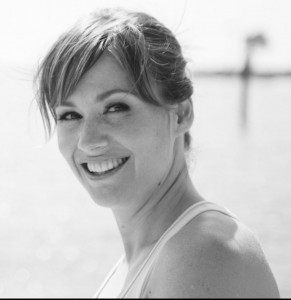I am thrilled to have my friend and colleague Brooke Thomas share a guest post on the blog. Brooke is a rolfer and yoga teacher who also happens to be an engaging and insightful writer. She has a free eBook entitled Why Fascia Matters, that you can download at the link below.
Check out the book here —Why Fascia Matters
And here is a link to her website Fascia Freedom Fighters, and a short synopsis of the book to let you know what you will be getting.
The ebook Why Fascia Matters is kind of like a top ten list of how this tissue system impacts,well, anyone who is living in a body. I wrote it in the hopes of helping people to better understand their bodies from a more whole (i.e. unified organism) perspective, rather than the factory model, parts-based perspective that we primarily operate from, and this took the form of “translating” some of the current fascial research. Here is what is covered chapter by chapter:
1) Meet fascia: In the first chapter we go over why “fascia” has become such a buzzword of late and what it actually is, as well as what some of the common misconceptions are about it.
2) It’s all connected: We’ve all heard this phrase ad nauseum to the point of not really knowing what people are trying to convey by saying it. So in this chapter we look at connectedness from the perspective of fascia- the one system which tithes into every other aspect of human physiology (!), and address some of the language of anatomy which keeps us trapped in parts-based thinking.
3) How we actually move: When we think of ourselves as a collection of parts we tend to believe that we can move just isolated pieces of ourselves. But just as there are no local problems, there are also no local movements.
4) A masterpiece of tensegrity architecture: Ever wonder what your body has in common with a geodesic dome home? Or the Kurilipa tension bridge in Australia? From the cellular level on up, it has a lot in common with them. And understanding that relationship helps us to see that strength truly originates in balance- not bulk, or strain, or gripping.
5) The domino effect: All of these explanations of how we are actually built on the inside begins to illuminate the reason why those persnickety compensatory patterns can evade resolution and how to unravel them for more long term results.
6) A fluid tensegrity system: Fascia is a fluid support system (wah!?) and that doesn’t just mean we have to get in our 8 glasses of water a day. But understanding how this functions on a cellular level we can repair and prevent injury and pain, as well as engaging a host of beneficial anti-aging properties.
7) Its springiness wants to help you out: When your fascia can remain fluid and balanced (see above), you retain its springy quality which enables you to move with more efficiency and ease. This translates not only to perks like running faster, jumping higher, throwing farther, and recovering more easily, but also (again) to that more graceful aging process.
8) Variation matters: We become the shapes and the movements that we make most of the time. That means not just that we have to “workout” in a fitness sense, but more importantly that we have to have more varied movement throughout our days and more consistently utilize the kinds of functional movement patterns that have served humans since the beginning of our species (i.e. appropriate- and frequent- walking patterning, as discussed here on Core Walking)
9) The original information superhighway: Fascia is also our largest and richest sensory organ, which means that those “cables” of our internal “tensegrity architecture masterpiece” are communicating important information to our cells about how they should adjust their activities, as well as being our primary organ of proprioception- i.e. of knowing where we are in space.
10) Loving your fascia: In the final chapter we address the big, “So now what?” question. Now that you better understand how your body functions from the perspective of resolving and avoiding pain and injury, this chapter tells you how you put that knowledge to use to best take care of yourself.

